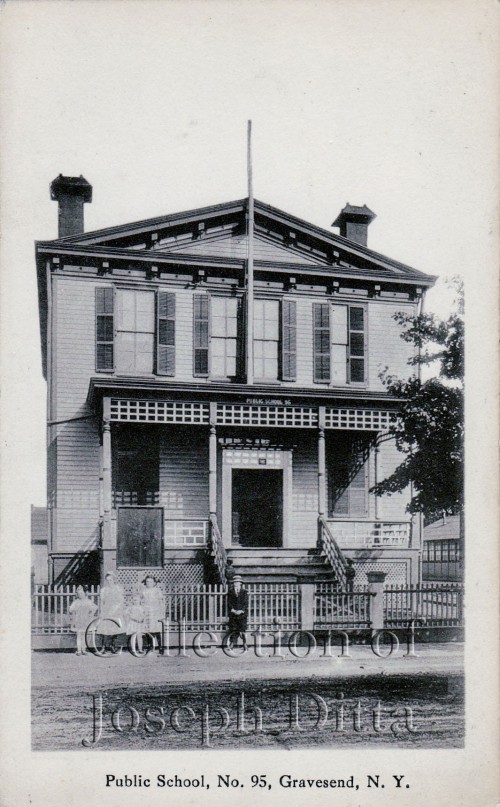Food will always be a mainstay of social media posts. Now, while we’re home isolating to stop the spread of Covid-19, it seems recipe sharing is even more popular (just behind those polls asking for your favorite record album covers. . .). I am not a chef, but I do love to binge on cooking shows. And I am intrigued by the longevity of some dishes: I estimate my family has been making a certain soup for the holidays since about 1910, and for who knows how many years before that back in Italy. But that’s just a drop in the bucket compared to the old recipes passed down by the descendants of Brooklyn’s 17th-century settlers.
One I’ve long fantasized of tasting is that for Colonial Dutch wafers described by Gertrude Ryder Bennett (1901-1982). The longtime caretaker of her historic birthplace, the 1766 Wyckoff-Bennett Homestead (1669 East 22nd Street), Gertrude was a saver of everything. Among her treasures was a heavy iron with thirty-one-inch handles. Its weight suggests a crane would have held it over the fire. One of its discs bears the initials of Gertrude’s great-great-grandfather, Wynant Bennett (1740-1815). The other has the date 1780, commemorating some long-forgotten family event. A teaspoonful of batter was placed on one disc, the other disc clamped down, and the whole turned over once while cooking. The paper-thin wafers–embossed with “WB” and “1780” could be rolled before they cooled and crisped, or served flat.

Rubbing of Gertrude Ryder Bennett’s wafer iron published in Albert H. Sonn, Early American Wrought Iron (New York: C. Scribner’s Sons, 1928), vol. 3, plate 307.
Unlike everyday waffles, wafers were a treat served on holidays and special occasions. Gertrude’s mother Nellie May made them often, but when she died in 1951, the recipe was presumed lost. Gertrude despaired of ever again savoring their delightful, “crisp, slightly browned sugar and nutmeg flavor.” As she describes in Living in a Landmark (1980), after scouring libraries and questioning fellow descendants of the Dutch–whose “faces brightened at the thought of the wafers they had enjoyed in their youth,” but who had no recipes–Gertrude happened upon an old book in her mother’s handwriting. It contained two recipes for the wafers that varied only slightly. After much experimentation with their vague measurements, and in consultation with dietitian friends, Gertrude hit upon the following method that recreates the same taste and texture of her mother’s wafers. She used a more manageable Norwegian krumkake iron to cook them, but I suppose an Italian pizzelle iron might work, too.
COLONIAL DUTCH WAFERS
Cream together ½ C[up] butter (no substitutes) and 1 C[up] sugar. Then add 3 egg yolks, beaten. Add 1 ½ C[up] flour plus 6 T[ablespoons] flour, ¼ t[easpoon] salt, and ½ t[easpoon] nutmeg. Add 3 egg whites, beaten but not too stiff. Place one spoonful at a time in the center of the cooking disc and close handles. Hold over a gas burner for a few seconds, turning once, until both sides are slightly browned.
If you’re game to give them a try, please let me know if these wafers are as mouthwatering as I imagine. Or, better yet, send me some!

The Wyckoff-Bennett Homestead as it appeared around 1924. Image from Frederick Van Wyck, Keskachauge, or The First White Settlement on Long Island (New York: G. P. Putnam’s Sons, 1924).
Copyright © 2020 by Joseph Ditta (webmaster@gravesendgazette.com)


















